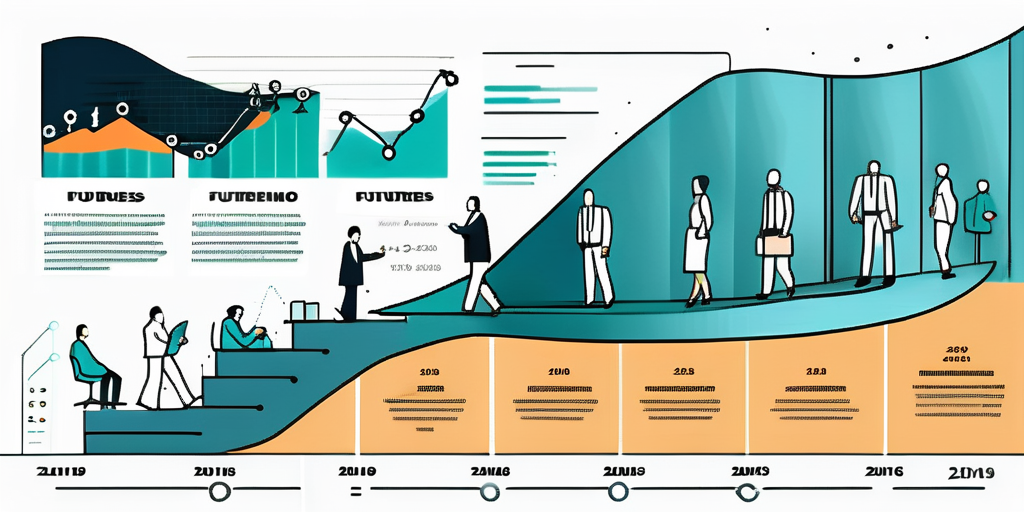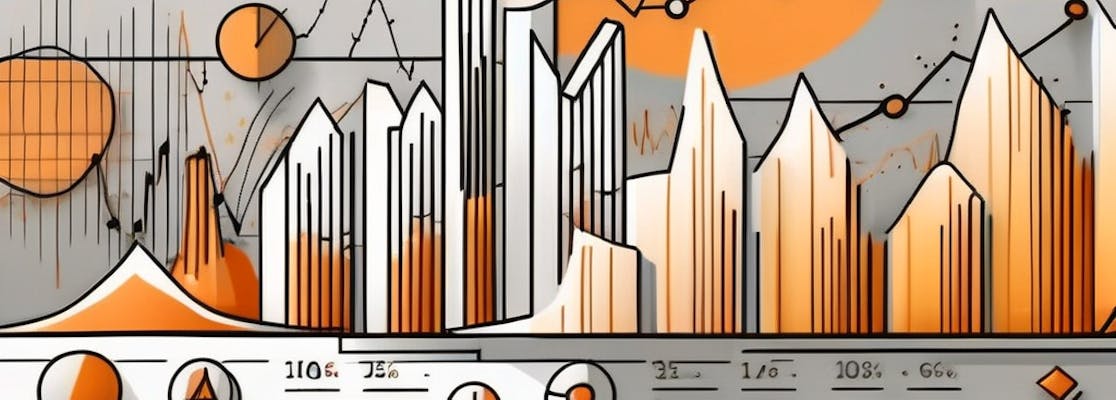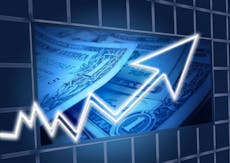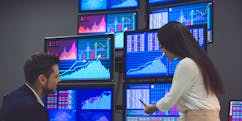What Is Futures Trading? Everything You Need to Know
Futures trading is a type of investment that involves buying and selling contracts for the future delivery of an underlying asset.
It is a popular form of trading that allows investors to speculate on the future price movement of various commodities, currencies or financial instruments.
In this article, we will explore the ins and outs of futures trading and provide you with everything you need to know to get started.
Understanding the Basics of Futures Trading
In its simplest form, futures trading involves two parties entering into a contract to buy or sell an asset at a specified price on a predetermined future date.
The buyer of a futures contract agrees to take delivery, while the seller agrees to deliver the underlying asset.
One key characteristic that sets futures trading apart from other forms of trading is leverage.
Futures contracts require only a fraction of the total contract value as an initial margin. This allows traders to control a larger position with a smaller amount of capital, magnifying both potential profits and losses.
Another important aspect is the concept of marking-to-market. Futures contracts are marked to market daily, meaning any profits or losses are settled daily. This ensures the financial integrity of the market and reduces counterparty risk.
Furthermore, futures trading is not limited to commodities like oil, gold or agricultural products.
It also includes financial instruments such as stock market indices, interest rates, and currencies. This diversity in available assets provides traders with a wide range of options to choose from, allowing them to diversify their portfolios and manage risk more effectively.
Moreover, futures markets are known for their high liquidity, meaning that traders can enter and exit positions with ease. This liquidity is driven by the continuous flow of buying and selling in the market, ensuring that there is always a willing counterparty for a trade.
This aspect is particularly advantageous for traders looking to execute large orders without significantly impacting the market price of the asset.
How to Get Started with Futures Trading
If you're interested in getting started with futures trading, here are some steps to guide you:
Step 1. Educate Yourself
Learn about futures trading by reading books, taking courses or accessing educational resources provided by reputable brokers
Step 2. Choose a Brokerage
Select a brokerage firm that offers futures trading services and provides a robust trading platform.
Step 3. Open an Account
Complete the account opening process, which usually requires providing personal information, financial statements and a signed agreement.
Step 4. Fund Your Account
Deposit funds into your trading account to meet the initial margin requirements and have capital available for trading
Step 5. Develop a Trading Plan
Define your trading goals, risk tolerance and trading strategy. Create a plan that outlines your entry and exit criteria
Step 6. Start Trading
Execute trades based on your trading plan. Monitor the markets, manage your positions and continually evaluate your performance.
Step 7. Strategy Exploration
Learn diverse futures trading strategies like trend following, spread trading, and options trading. Each strategy carries unique risks and profit potential, necessitating a thorough understanding before application.
Step 8. Informed Decision-Making
Stay abreast of market trends, economic indicators and geopolitical events to enhance your ability to make better trading decisions.
Step 9. Brokerage Selection Criteria
Choose a brokerage based on factors such as commission rates, customer service, research tools and the range of available markets and products.
Step 10. Trading Preferences
Consider your trading preferences when selecting a broker, as some specialize in specific futures contracts, while others provide access to various markets.
Step 11. Risk Management Practices
Practice risk management through techniques like stop-loss orders, portfolio diversification, and avoiding over-leveraging when engaging in futures contracts.
Step 12. Protecting Capital
Implement risk management strategies to safeguard your capital, reducing significant losses and improving the longevity of your trading career
Step 13. Disciplined Approach
Approach futures trading with discipline and a well-thought-out plan, acknowledging its high-risk nature.
Key Features of Futures Trading
-
Leverage in Futures Trading – In futures trading, leverage allows managing large contract values with minimal capital, amplifying potential profits and losses. This defines it as a high-risk, high-reward venture. Traders need a solid understanding of the market, risk management, and factors impacting underlying asset prices.
-
Concept of Margin – A crucial element in futures trading is margin. Traders deposit an initial margin, a fraction of the contract value, to secure their positions.
-
Maintenance Margin in Futures Trading – In futures trading, maintenance margin may be necessary to cover potential losses. Requirements fluctuate based on the traded asset and the listing exchange of the contract.
Benefits and Risks of Futures Trading
Like any investment, futures trading has its share of benefits and risks. Let's explore some of the advantages first.
Benefits
- Leverage – Futures trading allows traders to control a larger position with less capital, potentially magnifying profits.
- Liquidity – Futures markets are highly liquid, providing ample opportunities for entering and exiting positions at fair prices.
- Diversification – Futures trading allows investors to participate in various markets and asset classes, mitigating concentration risk.
- Price Discovery – Futures prices are determined through market forces, reflecting the collective sentiment of market participants.
Furthermore, futures trading offers a unique avenue for diversification.
Diversifying across various futures markets, including commodities, equities, and currencies, helps spread risk and lessen the impact of volatility in any one market.
This strategy safeguards a trader's portfolio from unexpected market movements and improves overall risk-adjusted returns.
Risks
- Volatility – Futures markets can be highly volatile, resulting in significant price swings and potential losses.
- Margin Calls – If the market moves against a trader's position, they may be required to deposit additional funds to meet margin requirements.
- Limited Time – Futures contracts have expiration dates, which means that traders need to actively manage their positions and roll over contracts if necessary.
- Counterparty Risk – While regulated exchanges reduce counterparty risk, there is always a possibility of default by the other party to the contract.

Types of Futures Contracts
There are various types of futures contracts available for trading, each representing a different underlying asset.
For commodity futures, popular contracts include:
- Crude oil
- Natural gas
- Gold
- Silver
- Wheat
- Corn
- Soybeans
These commodities are actively traded in futures markets due to their significance in global trade and their impact on various industries.
Within financial futures contracts, traders can access various instruments like:
- S&P 500 indexes
- Treasury bonds
- foreign currencies (e.g., the Euro or Japanese Yen)
These contracts offer opportunities to hedge against market volatility or speculate on macroeconomic trends.
Furthermore, futures contracts can have different expiration dates, typically categorized as near-month, middle-month, and far-month contracts.
The choice of contract depends on the trader's investment goals, trading strategy, and level of risk tolerance.
Traders looking for short-term price movements may prefer near-month contracts, while those with a longer investment horizon may opt for far-month contracts to align with their strategic outlook.

Futures Trading Strategies
There are numerous trading strategies that traders employ in futures markets.
These strategies can vary in complexity and can be tailored to different market conditions and investment goals.
Here are a few common strategies:
-
Day Trading – Day trading, popular among short-term traders in the fast-paced futures market, relies on technical analysis and real-time data for quick decisions on small price movements. It demands high discipline and risk management due to the rapid buying and selling involved.
-
Trend Following – Trend following is a strategy where traders ride established trends, maximizing profits as prices move in their favor. This approach involves using tools like moving averages and trendlines to confirm the trend direction before entering a position.
-
Options Strategies – Traders use options on futures contracts to hedge positions, generate income, or speculate on volatility.
-
Futures Trading Strategies – Learn different futures trading strategies like trend following, spread trading, and options trading. Each strategy has its risks and profit potential, so understand them before applying.
-
Market Analysis for Informed Decisions – Stay informed about market trends, economic indicators and geopolitical events to make better trading decisions.
-
Brokerage Selection Criteria – Choose a brokerage based on factors like commission rates, customer service, research tools, and available markets/products.
-
Tailor Your Broker Choice to Preferences – Consider your trading preferences when selecting a broker, as some specialize in specific futures contracts, while others offer access to various markets.
-
Effective Risk Management – Practice risk management by using stop-loss orders, diversifying your portfolio, and avoiding over-leveraging when trading futures contracts.
-
Protect Capital and Longevity – Implementing risk management protects your capital, reducing significant losses and improving your trading career's longevity.
-
Discipline and Planning – Approach futures trading with discipline and a well-thought-out plan due to its high-risk nature.
Futures Regulation and Oversight
Government agencies and self-regulatory organizations regulate futures trading to ensure fair and transparent markets.
The CFTC is the primary regulatory body overseeing futures and options markets in the United States.
Regulation helps protect market participants from fraud and manipulation, ensures proper risk management practices and maintains the market’s integrity. It is important for traders to choose a reputable brokerage firm that operates within the regulatory framework.
Furthermore, regulatory oversight extends beyond just monitoring trading activities. The CFTC also plays a crucial role in enforcing rules related to position limits, market manipulation and insider trading.
By conducting regular audits and investigations, the CFTC aims to uphold market integrity and prevent any misconduct that could undermine the stability of the futures market.
In addition to government agencies, self-regulatory organizations such as the National Futures Association (NFA) work alongside regulators to oversee the conduct of market participants.
The NFA, for instance, sets standards for business conduct and compliance, conducts audits, and resolves disputes between traders and brokerage firms. This dual regulatory approach, involving governmental and self-regulatory bodies, creates a comprehensive framework that promotes market transparency and investor protection.
Frequently Asked Questions
No, futures do not predict the stock market; rather, they serve as instruments reflecting market expectations and hedging strategies. Futures prices are influenced by various factors and their movements provide insights into sentiment and potential market directions but do not serve as predictive indicators.
The big point value of futures varies by contract. For instance, in the S&P 500 E-mini futures, one point is typically valued at $50. This means a movement of one point in the index corresponds to a $50 change in the contract's value.
A simple example of futures is an agreement to buy or sell a specified quantity of a commodity, currency or financial instrument at a predetermined price on a future date. This contract allows participants to hedge against price fluctuations or speculate on market movements.
Three types of futures include commodity futures, representing goods like oil or gold, financial futures, tied to interest rates or stock indices and stock index futures, tracking the performance of a specific stock market index. Each serves different hedging and speculative purposes in the financial markets.
Futures in the stock market are financial contracts obligating the buyer to purchase or the seller to sell an asset, like stocks or commodities, at a predetermined future date and price. Traded on organized exchanges, futures allow investors to speculate on price movements or hedge against potential market fluctuations.
Final Thoughts
Futures trading offers potential profits with flexibility to speculate on various assets, leveraging liquidity.
Approach it with caution, requiring a solid trading plan, discipline, risk management and continuous learning.
Proper knowledge and preparation make it a valuable portfolio addition.
Consider margin requirements, varying with assets and broker policies, to avoid calls and liquidation.
Staying informed about global economic events and market trends is crucial for making informed decisions and increasing success chances in futures trading.






